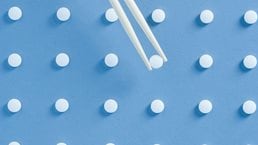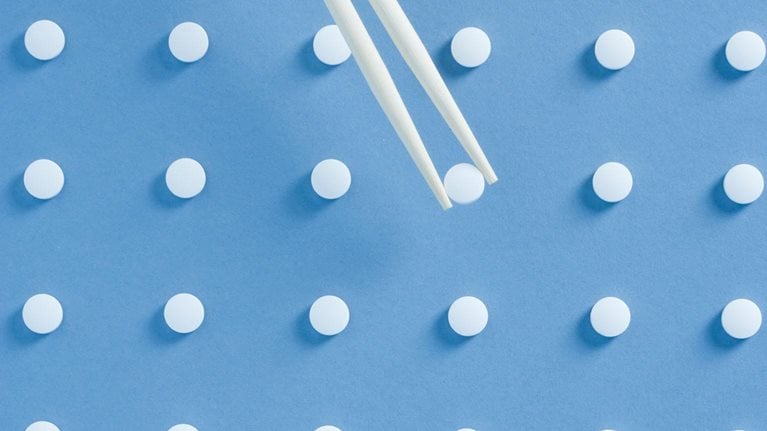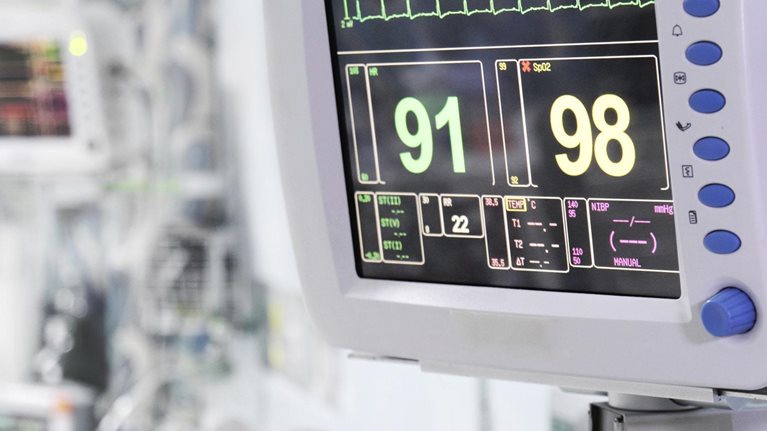The medical device industry has continued to innovate aggressively and grow strongly. Worldwide sales of medical devices rose to $380 billion last year from $260 billion in 2006. This growth has been enabled by underlying demographics and by the innovation and expansion of medical devices’ clinical applications and effectiveness. Companies continue to innovate: wirelessly interconnected devices, software as a medical device, cloud-based artificial intelligence, and cost-effective customization enabled by 3-D printing are just a few recent examples.
Stay current on your favorite topics
Against this backdrop, the need for quality in the design, manufacture, and distribution of devices is as strong as ever. But it appears that device quality has not kept pace with other aspects of the industry’s growth and evolution. One marker of this gap is inspections by the US Food and Drug Administration (FDA). From 2010 to 2015, about 50 percent of FDA device-surveillance inspections led the agency to require official action (typically via a warning letter) or voluntary action to correct quality system failures. This steady state of noncompliance suggests that manufacturers have struggled to meet regulatory requirements, while the FDA has struggled to communicate and enforce them. To be clear, compliance with regulations is not the same as quality, and the benefits of quality extend beyond avoiding the risks of noncompliance. Among the most important benefits is lower quality costs, permitting greater investment in areas such as product development and market expansion.
In 2011,1 McKinsey published a study that showed the difference in quality-related costs—including day-to-day quality costs, as well as costs and revenue losses from nonroutine, poor quality events—between the leading and lagging performers in the medical device industry. We recently conducted a second study to refresh and expand the analysis to quantify the total cost of quality for medical devices. The study also identified and measured the impact of the emerging best practices that medical device companies are using to raise quality (see sidebar “Our methodology”). We focused on manufacturing quality operations and did not assess research-and-development (R&D) or commercial quality costs.
Studies of quality costs are too often focused exclusively or predominantly on costs to prevent or detect quality flaws. Such costs represent the tip of the iceberg and, without accounting for equally important direct and indirect quality costs, these studies are incomplete.
Our study probed beneath the surface, using three lenses to characterize the cost of quality:
- Direct cost of ensuring good quality. This includes the organizational costs involved in preventing or appraising quality issues. Both quality personnel and operations staff may be involved in performing this type of work, so both have been captured in the estimate.
- Direct cost of poor quality. This includes the labor costs to remediate failures, as well as the material and financial costs of internal and external quality failures.
- Indirect quality costs. For individual companies, this includes the revenue loss and risk exposure from nonroutine compliance issues, as well as market-cap losses.
We estimate the total direct cost of quality at 6.8 to 9.4 percent of industry sales. (For a note on what is excluded from our analysis, see sidebar “The cost of wasted material.”) Good quality practices would recover a large part of these costs. Moving the industry to median or top-quartile performance in quality operation practices and reducing nonroutine external quality failures would capture savings equal to 1.6 to 3.0 percent of industry sales.2 Our research found that several practices correlate with good quality outcomes. These include robust product and process controls, stronger operational maturity relating to people and assets, mature quality systems (especially supplier controls and nonconformances management), and robust quality culture and practices across the organization.
What is the total cost of quality today?
The medical device industry’s direct cost of quality of approximately 6.8 to 9.4 percent of industry sales equals $26 billion to $36 billion annually, based on the industry’s current annual sales of about $380 billion (Exhibit 1). The direct cost of ensuring good quality represents about one-third of this total cost, with the remainder resulting from the direct cost of poor quality. Spikes in nonroutine compliance costs may increase the range by up to 1.5 percentage points, or an additional $5 billion per year.

Our research identified and evaluated the following set of cost-of-quality drivers:
Direct cost of ensuring good quality
Organizational costs of prevention and appraisal, estimated at 2.0 to 2.5 percent of annual sales, represent the largest share of total costs. Prevention and appraisal costs include quality system support, validation, quality control, testing and inspection, auditing, and other quality activities. While these activities can be performed within the quality organization, the operations staff can also contribute (as we discuss below), thereby spreading the cost outside the quality organization’s budget. These costs do not include R&D and commercial resources that contribute indirectly to good quality, such as through product design and customer feedback. The cost of prevention and appraisal varies by technology—from 1.5 to 2.0 percent of sales for disposables and implants to approximately 3.5 percent of sales for small electromechanical devices and capital equipment (based on weighted average industry sales by share of each technology).
Direct cost of poor quality
Remediation costs represent 0.4 to 0.7 percent of annual sales. Remediation activities include investigations, corrective and preventive actions (CAPAs), complaints, medical device reports (MDRs), and field actions. These activities are often performed by the quality organization—partially on-site, but often centralized above-site.
Routine internal quality failures represent 2.1 percent of annual sales. Two sources drive routine internal quality failure costs:
- Rejects and rework, which typically represent 20 percent or less of this cost for small electromechanical devices and capital equipment, but more than 50 percent for implants and disposables.
- Deviations management, which includes costs related to production quality failures, such as destroyed materials, inventory changes, and fees for support, such as compliance and engineering consultation.
Routine external quality failures represent 0.4 to 1.6 percent of annual sales. These failure costs primarily relate to warranty costs, especially for small electromechanical devices and capital equipment. The cost of returned and destroyed products comprises a much smaller share of the cost of routine external failures. The cost of handling (which is part of remediation labor costs) and costs incurred by the commercial organization (for example, complaints intake and support for returns) are typically not measured and thus difficult to quantify. Accordingly, these costs have been excluded from routine external failure costs.
Nonroutine external quality failures represent 1.9 to 2.5 percent of annual sales. These costs result from significant quality and compliance events, such as recalls, FDA 483s, warning letters, consent decrees, import bans, and consumer litigation. Given the average annual occurrence rates and the typical cost for each such event, the cost of these events was estimated at $7.0 billion to $8.5 billion. Taking into account an additional $0.5 to $1.0 billion for nonroutine events at non-FDA-registered facilities, the total is $7.5 billion to $9.5 billion annually. However, estimates based on industry surveys and annual-report scans indicate a broader range that may reach up to 3.8 percent of sales, or $14.4 billion (the highest reported nonroutine external failure cost for the past three years is almost 8 percent of sales).
Indirect quality costs
Additionally, indirect costs, such as revenue loss and market-cap impact related to nonroutine quality failures, can reach $1 billion to $3 billion for a medium to large medical device company. These quality failures may lead to a major compliance action, such as a consent decree requiring a plant shutdown, which can have a disproportionate cost impact. Based on high-impact medical device case examples, we estimate that, for individual companies, top-line impact can reach as much as $1 billion and market-cap impact as much as $2 billion.
What are the recoverable costs?
Understanding the cost of quality is one side of the coin in making a compelling case for the value of well-executed quality. The other side of that coin is the savings that companies achieve, in the form of recoverable costs, by applying segment-leading quality practices.
We estimate the range of recoverable costs at $6 billion to $11 billion per year, representing about 1.5 to 3.0 percent of sales. The lower estimate of recoverable costs reflects movement of poor-performing manufacturers to average-level performance (the “conservative” scenario), while the higher estimate assumes that poor- and average-performing manufacturers elevate to top-quartile performance (the “aspirational” scenario).3 In either scenario, significant savings would be achieved for each component of quality cost.
Climbing the maturity curve to better quality
In reviewing the practices of high-performing quality organizations, we identified five sources of maturity that correlate with good quality:
- operational maturity: product and process design
- operational maturity: people
- operational maturity: production assets
- quality system maturity
- quality culture maturity
Device manufacturers can apply practices related to these maturity sources to improve quality across their operations. We provide an overview of what these practices involve, as well as describe the gains made by companies that deploy them.
Operational maturity: product and process design. Quality performance is directly affected by specific practices in product and process design. Companies that show good practice in design for manufacturability and quality often identify a set of critical quality attributes (CQAs)4 and link them with critical control points (CCPs)5 in production, with relevant in-process testing steps established at the outset of manufacturing. Good practice also calls for companies to manage product complexity by streamlining design, optimizing the CQAs tracked per product, and limiting the total number of components in the product.
Our analysis found that companies that have a high share of products with defined CQAs—and CCPs tied to those CQAs—have a significantly lower share of low-quality products in the market.6 The strongest sites in our analysis tended to have a higher number of products with CQAs: 71 percent for high performers versus 40 percent for poor performers. However, unless sites linked these CQAs directly to their shop-floor processes, the impact was limited. At sites with the best quality performance, 70 percent of products had CQAs defined and linked to CCPs, while sites with the highest share of low-quality products had only 33 percent of their products formally characterized this way (Exhibit 2).

Would you like to learn more about our Life Sciences Practice?
Operational maturity: people. Device manufacturers can reduce deviation levels and recurrence by addressing operational structural factors, such as better employee-retention activities and shared quality targets.
Our analysis found that sites with higher product quality have lower employee turnover. At the high performers, average employee turnover is 3.5 percent per year, compared with 10.2 percent for poor performers (Exhibit 3).

We also found that a high share of employees with quality targets correlates with better quality outcomes. The strongest sites include contribution to quality as part of their evaluation criteria for all or most employees. These sites report that they do this with specific, quantitative individual targets. In contrast, poorer-performing sites may agree that quality is generally important but usually do not enforce specific measures to improve it.
Operational maturity: production assets. The proper maintenance and renewal of manufacturing assets is necessary for sustainable production and quality performance. Sites that have a sufficient focus on preventive maintenance have fewer issues with equipment and facilities. In the long term, companies also need to invest sufficiently in the renewal of their production assets to avoid serious issues with both quality and compliance.
We found that the sites that spent less than 1 percent of their annual cost of goods sold (COGS) on preventive maintenance generally suffered from a higher occurrence of deviations related to equipment. On average, sites spending more than 1.5 percent had a significantly lower probability of equipment-related failures. We consider 1.5 to 2.0 percent of COGS to be the minimum range for a healthy level of spending on preventive maintenance for companies with an average-to-high level of automation. By setting a formal preventive-maintenance plan and ensuring its appropriate funding, companies can shift focus from remediating deviations to preventing equipment-related issues.
Sufficient reinvestment in maintaining capital assets is also crucial to prevent facilities and equipment from aging and eventually failing. To reach appropriate levels of asset renewal, average annual capital investment in replacements should be 1.3 to 1.4 times higher than annual depreciation.
Quality system maturity. Aspects of quality system maturity, such as supplier quality and fast but thorough investigations, drive better quality performance and reduce quality cost.
Strong-performing sites share their internal quality processes with their suppliers. In our research, 56 percent of the highest-performing sites shared their own CQAs with suppliers and had them translated into supplier process CCPs. By contrast, only 10 percent of the poorest-performing sites did the same (Exhibit 4, left side).

Proper investigations are a fundamental part of any high-performing quality system. The challenge for device makers, however, lies in ensuring that they are sufficiently thorough in their investigations without getting bogged down in activities that take too long or cost too much.
We found that investigations that are too fast or too long each promote a high recurrence of nonconformances. High-performing sites generally conduct thorough investigations that span, on average, 40 to 55 days (Exhibit 4, right side). Working at this speed seems to provide sufficiently rapid information to correct deviations while also allowing enough time to get to the true root cause of a problem. The best companies monitor deviation investigations to ensure the timely handling of emerging issues, but they also use performance metrics, such as CAPA effectiveness and deviation-recurrence rate, to drive investigation robustness. Conversely, setting investigation-closure time as a performance metric often leads to short, cursory reviews, ineffective CAPAs, and recurring problems.
Quality culture maturity. Aspects of culture maturity, such as involving operations personnel in quality activities, also help to achieve better quality outcomes. High-performing sites do not leave quality to the quality function alone; instead, they embed quality-related activities into the roles of staff across the organization. Manufacturing and engineering personnel are involved in a range of activities, from prevention (validation and equipment maintenance) to remediation (investigations and root-cause problem solving).
By involving nonquality employees in such activities, these organizations help to ensure that they have technical expertise to continually improve operation robustness and fix issues at their root cause. At the strongest sites we analyzed, the equivalent of 10 percent of site full-time equivalents (FTEs) or more are nonquality personnel involved in quality work.
Quality maturity in action
Numerous examples illustrate how device manufacturers have applied these best practices to recover the cost of quality.
Automating data collection. A manufacturer used a paper-based system for maintaining device history records (DHRs), with individual DHRs containing hundreds of pieces of paper and thousands of quality data points. Based on the amount of quality data manually collected throughout the process, there were nearly 100 opportunities for documentation errors every day. The manufacturer replaced this paper-based system with a closed-loop manufacturing-execution system. This system enabled faster detection and prevention of problems and improved investigations through greater speed and visibility in finding and correcting root causes. The system likewise improved data consistency across plants and the supply chain and deployed dashboards for key metrics, enabling continuous improvement. The manufacturer achieved a productivity improvement of 6 to 10 percent and captured significant reductions in key performance indicators (KPIs): production noncompliance reports (41 percent decrease), overall complaints (58 percent decrease), workmanship complaints (65 percent decrease), and documentation errors (100 percent decrease).
Launching a holistic quality improvement program. After receiving a corporate warning letter, a manufacturer launched a holistic quality improvement program that encompassed its management philosophy, business processes, systems, and culture. Its vision was to make quality a source of competitive advantage and continuously improve to drive higher performance. To comply with global regulations and standards, the manufacturer developed a standardized quality management system based on ISO 13485. It also implemented single global electronic systems for key quality system processes like CAPA to ensure a consistent approach and behavior and promote a culture of compliance. The manufacturer appointed stewards for each of the key quality system processes that are responsible to engage and empower talent from across the organization to drive rates of improvement across the quality system. As a result of such initiatives, field actions are now one-third of what they were in 2005, and CAPA cycle time has fallen by 50 percent, during which time the business has grown in size and complexity. Because there are fewer service issues, inventory has been reduced by 25 days, resulting in millions of dollars in savings. Quality spending decreased by 8 percent from 2010 to 2013, compared with an average increase of 7 percent industry-wide during that period.
Improving yield. A manufacturer faced severe quality-yield issues for a biological product. Its facility lacked clarity on the source of yield issues and lagged behind in employing world-class lean manufacturing practices. The manufacturer was on the verge of depleting safety stock, and current output levels could not meet demand. To focus its efforts exclusively on the highest-priority issues, the manufacturer created a “war room” to oversee daily governance and to quickly accelerate or stop initiatives. It also applied lean manufacturing tools to increase throughput, using a process map and issue tree to select levers and KPIs and relying on visual management to track progress. Additionally, it used a number of initiatives to increase quality yield, including analytics to understand yield loss, issue trees to prioritize resources, experiments to prove or disprove root causes, and acceleration of yield drivers. The manufacturer achieved a 50 percent throughput increase in less than one month and doubled production yield.7

Rethinking pharma productivity
Driving line improvements. A manufacturer sought to drive quality-related line improvements across several devices. Challenges came from a range of sources: bottlenecks caused by quality issues resulted in long lead times and high costs for a line of disposable devices, while customers complained about performance issues for other disposable devices. A third line saw high variability among operator performance, with production yields varying from less than 50 percent to 90 percent per operator. The manufacturer employed several quality initiatives in response. It conducted a thorough complaint investigation and identified critical quality attributes. It also designed appropriate process controls and improved products through design and process changes. And it used process automation to improve quality and repeatability. Through these initiatives, the manufacturer reduced the complaint rate for one product line by a factor of 18 and for another line by a factor of 12. It reduced its head count by 38 percent at one facility and by 75 percent at another. The manufacturer also increased capacity by 210 percent and reduced its manufacturing footprint by 50 percent, respectively, at these facilities.
Using predictive modeling of parts failure. By implementing predictive modeling of parts failure, a manufacturer was better able to undertake preventive maintenance and enhance device quality and performance. The modeling predicts probable part failures and replacement needs, which the manufacturer addresses during regularly scheduled preventive maintenance or maintenance for unpredicted breakdowns and replacements. Proactively scheduling maintenance and replacements minimizes warranty costs and avoids the need for expensive urgent and repeat service visits. In addition, the system examines the device to be serviced and recommends additional maintenance. Service kits are then assembled for the technicians, minimizing lost time that results from searching for parts and tools or scheduling further service when parts and tools are unavailable on-site. As a result of these efforts, the aggregate rate of field service calls and visits fell by more than 20 percent. The rates of field failure and negative customer feedback also fell significantly. The financial returns exceeded the target of 3 percent of revenue and redirected more than $100 million to the business, making funds available for design enhancements and improvements to the quality management system.
Although the device industry’s cost for quality operations has decreased since 2011, it remains significant. Opportunities to recover these costs are likewise significant. In discussions with senior quality executives, we repeatedly hear that they know that good quality pays dividends, but they struggle to support that firmly held belief with numbers. Our analysis provides these numbers. It also shows the real-world benefit enjoyed by companies that deploy leading quality practices. Taken together, these numbers and examples make a strong case for quality.


